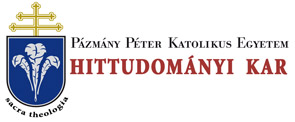Folia Theologica et Canonica, Supplementum (2016)
Hanns Engelhardt, Marriage and Divorce In Anglican Canon Law
MARRIAGE AND DIVORCE IN ANGLICAN CANON LAW 63 legislature, and obtained an Act of Parliament, which would have rendered you free, and legally competent to marry the person whom you have taken on yourself to marry with no such sanction. It is I quite true that these proceedings would have cost you many hundreds of pounds, whereas you probably have not as many pence. But the law knows no distinction between rich and poor. The sentence of the court upon you therefore is that you be imprisoned for one day, which period has already been exceeded, as you have been in custody since the commencement of the assizes.46 The result was the passing in 1857 of the “Act to amend the Law relating to Divorce and Matrimonial Causes in England47 which introduced divorce a vinculo and created the Court for Divorce and Matrimonial Causes transferring the jurisdiction of the ecclesiastical courts in matters matrimonial to this new court. However, parochial clergy were granted the right to refuse solemnizing a marriage after such divorce while a former spouse was still living. The Church of England has not denied the right of the State to make such a law.48 On the other hand, the Marriage Act reserved the right of any clergyperson to refuse solemnizing any marriage deemed objectionable. This was necessary because at common law parishioners - i.e. all persons resident in a parish in England whether they are members of the Church of England or not - have the right to marry in the parish church and to have the marriage solemnized by the rector, vicar or priest in charge of the parish, and accordingly, the member of the clergy in question was under a legal duty to conduct the marriage.49 2. Episcopal Church As already mentioned, the canons regulating marriage or Holy Matrimony first addressed not the initiation of the marriage as such but its dissolution. The first mention of marriage in the Journal of Convention of The Episcopal Church appears in 1808. The General Convention of that year passed a joint resolution stating “the sense of this Church” regarding the remarriage of divorced persons, declaring, 46 R. V. Hall; quoted from Holdsworth, W.. A History of English Law, I. London 1956.7 623/4; cf. also Winnett, A. R., Divorce and Remarriage in Anglicanism, 134. 47 20&2I Viet. c. 85. " Cf. Moore (1967), p. 83. 49 A Response to the Government Equalities Office Consultation - “Equal Civil Marriage’’ - from the Church of England, Annex no. 2, 2.
